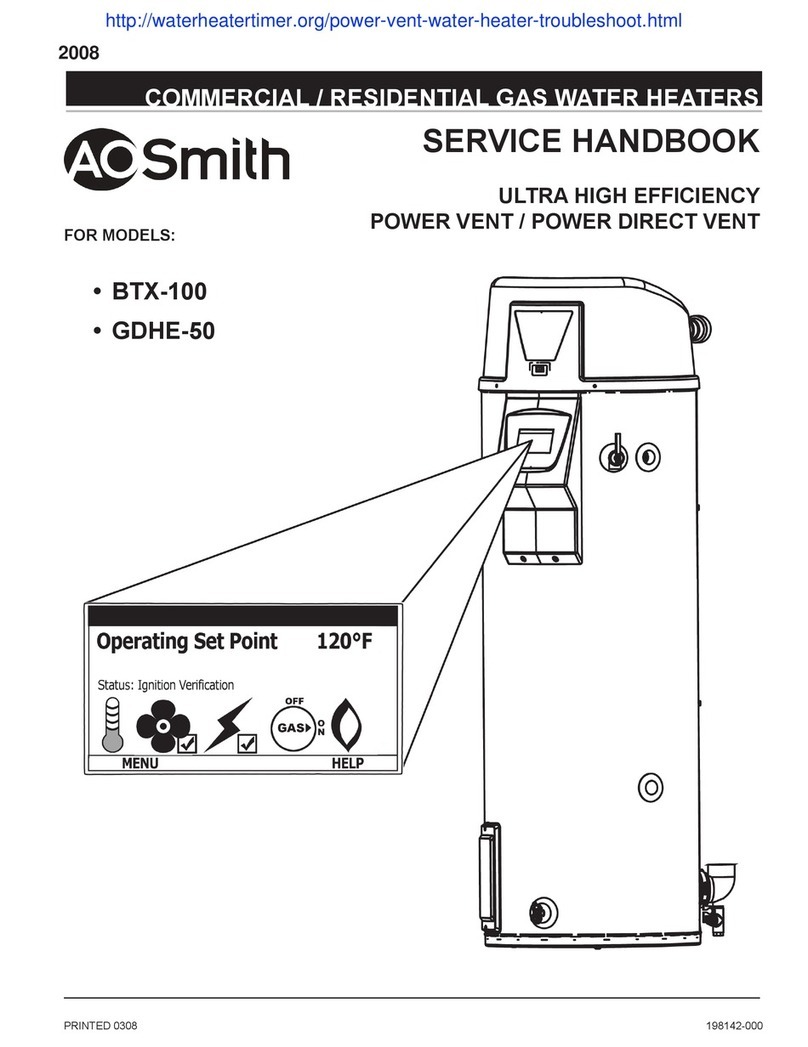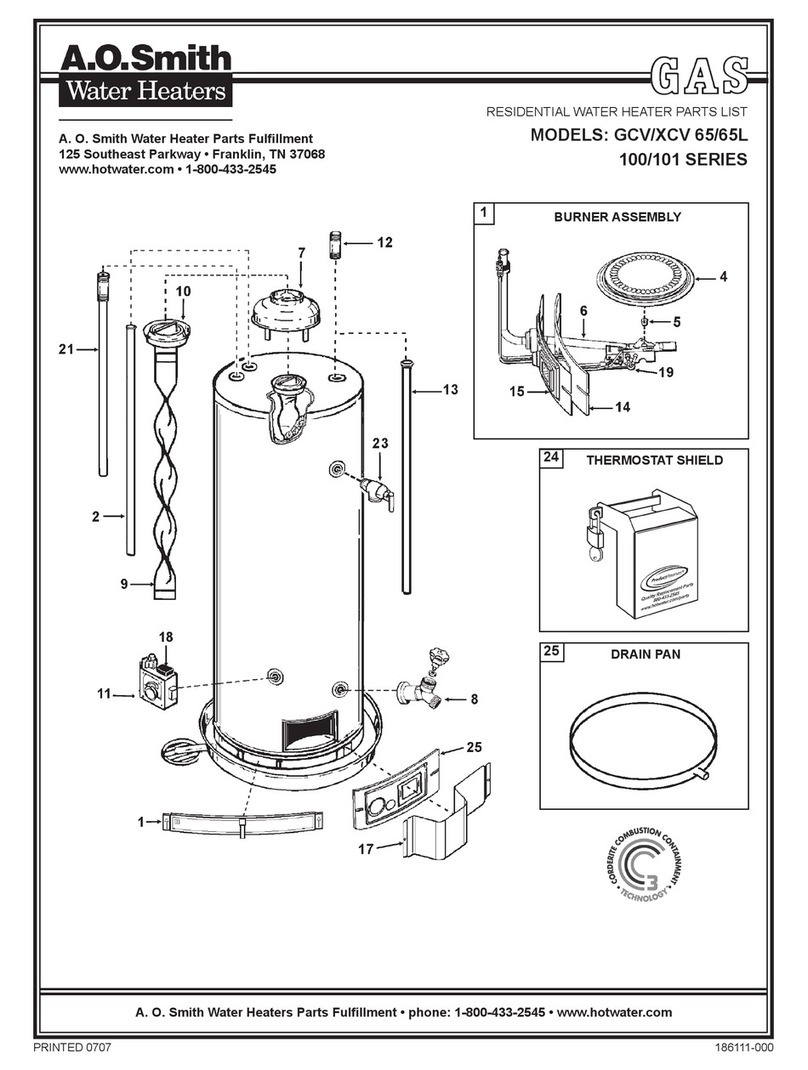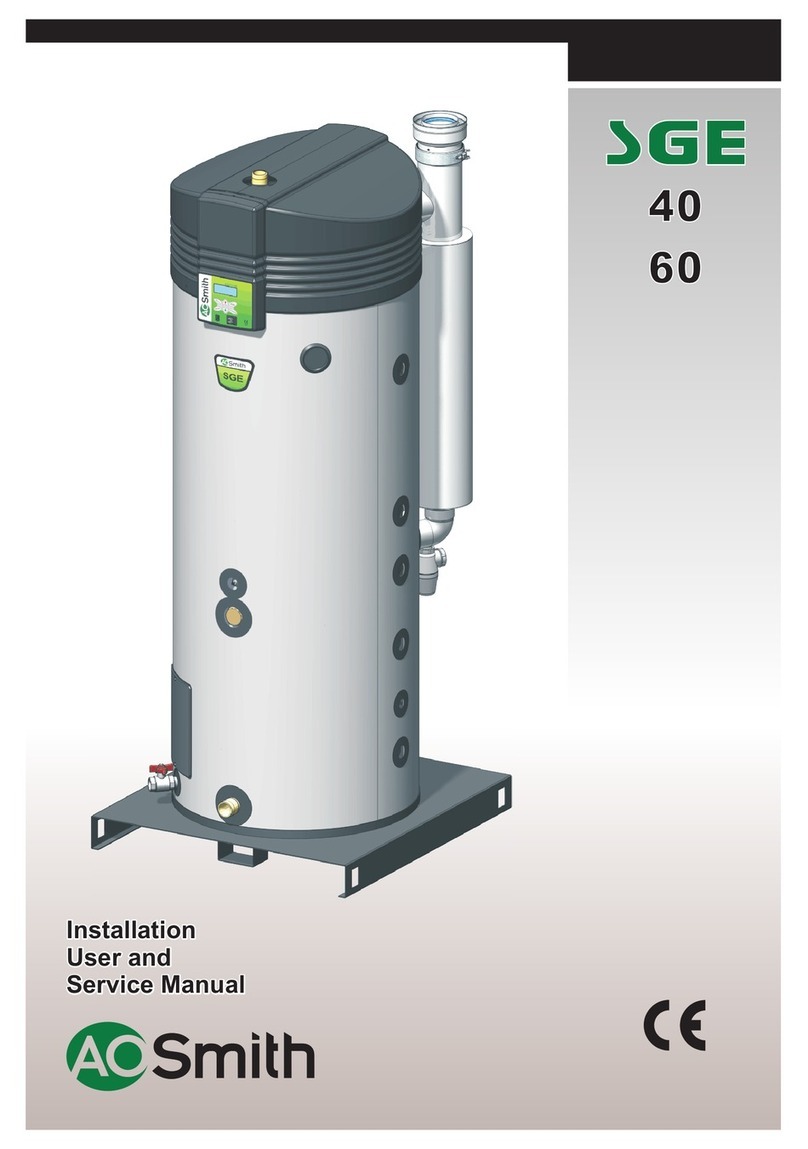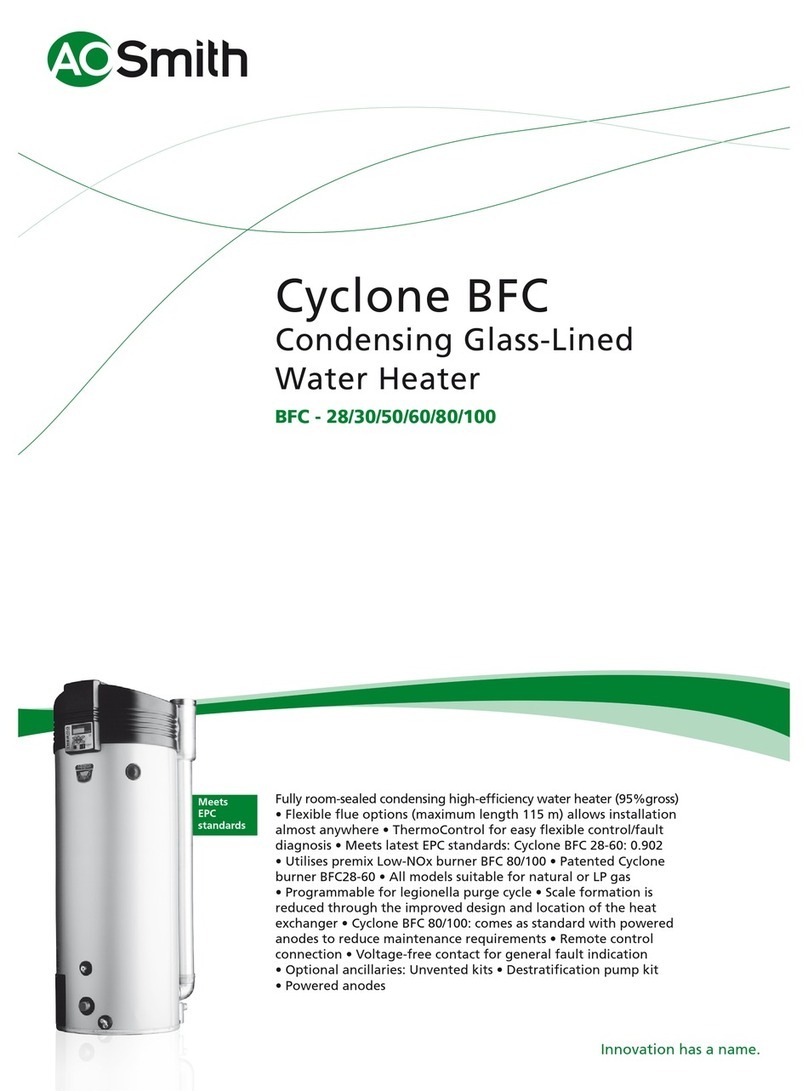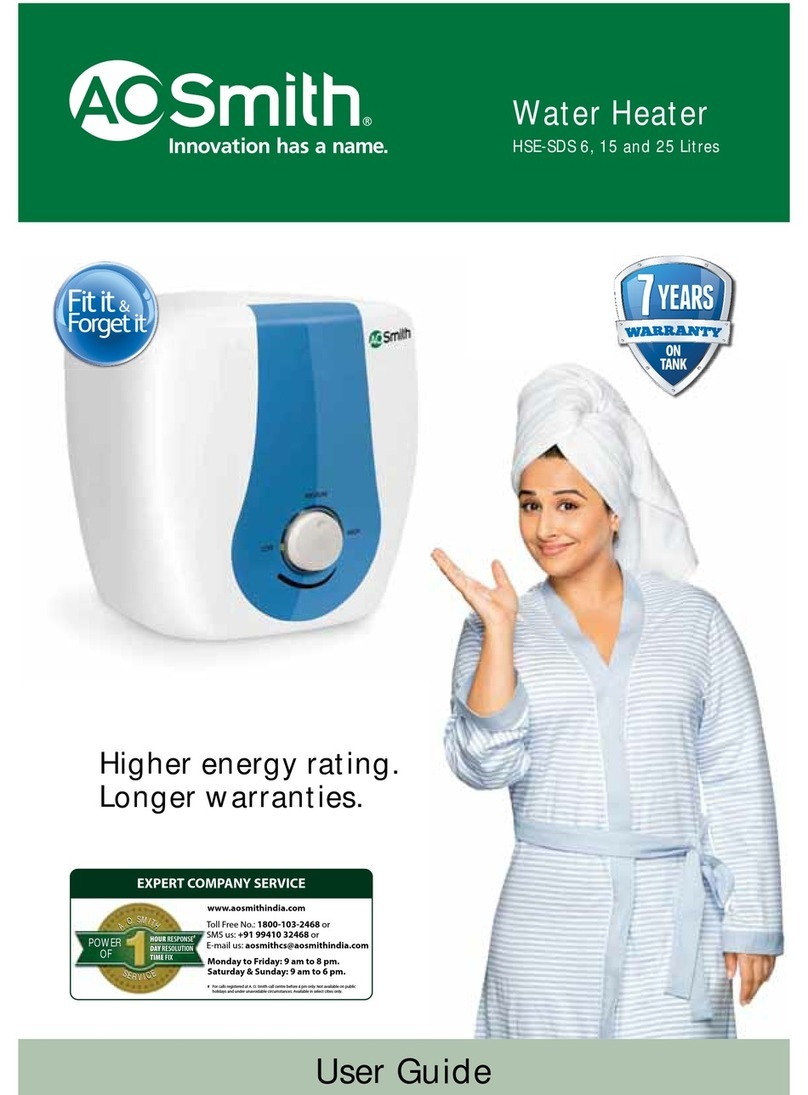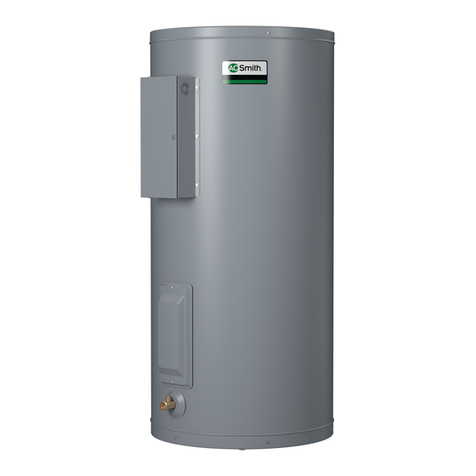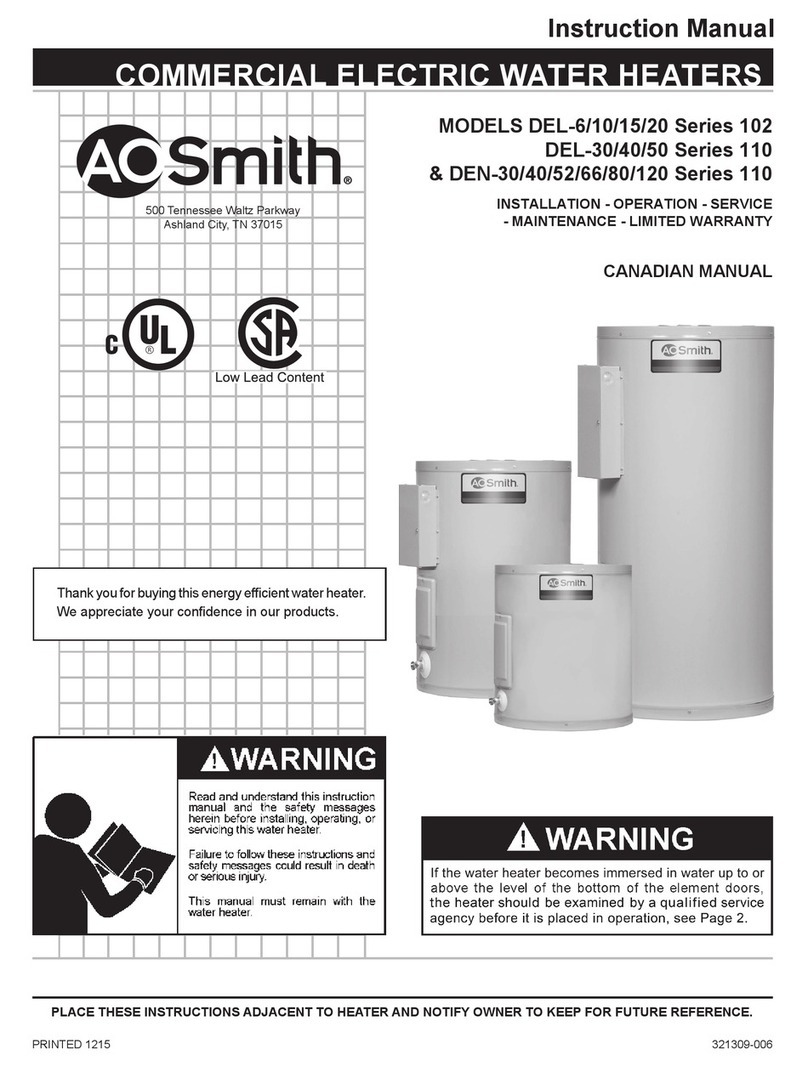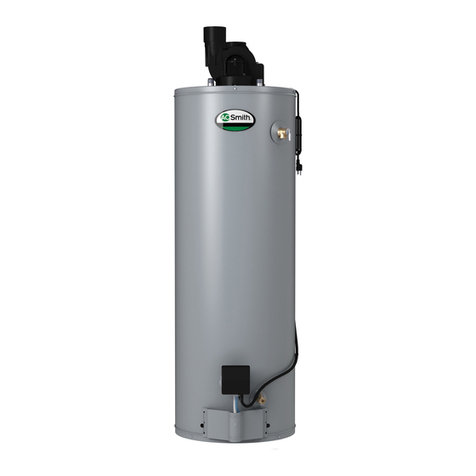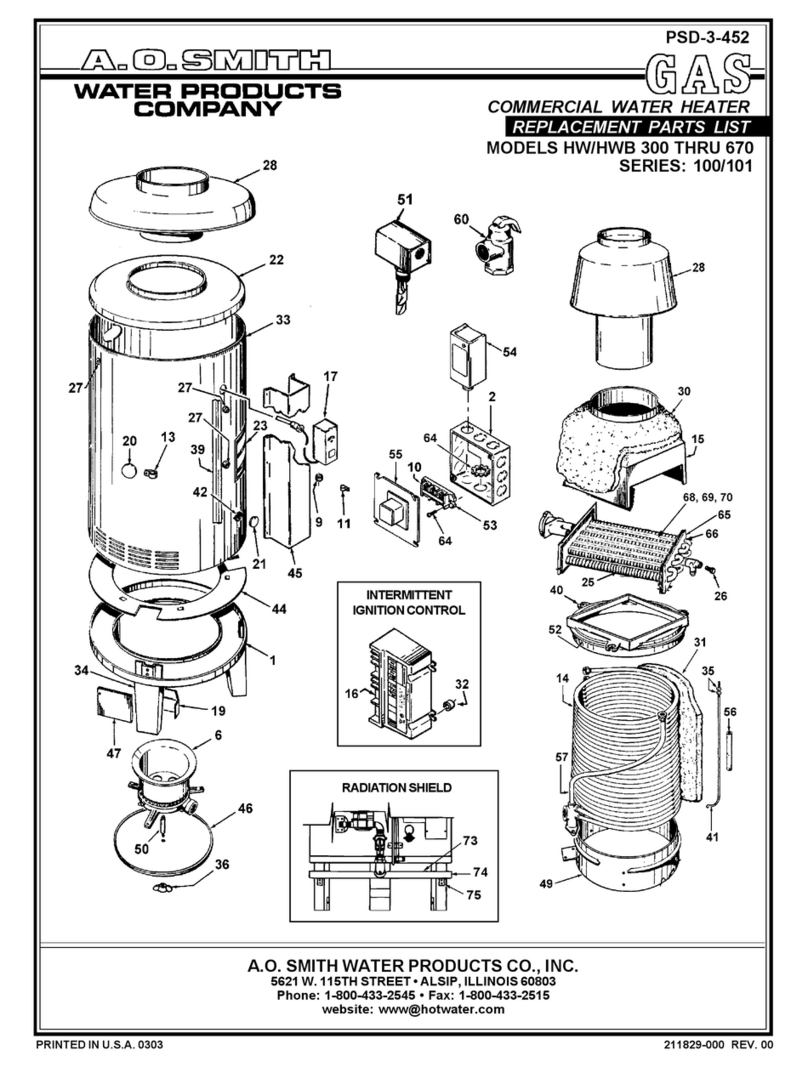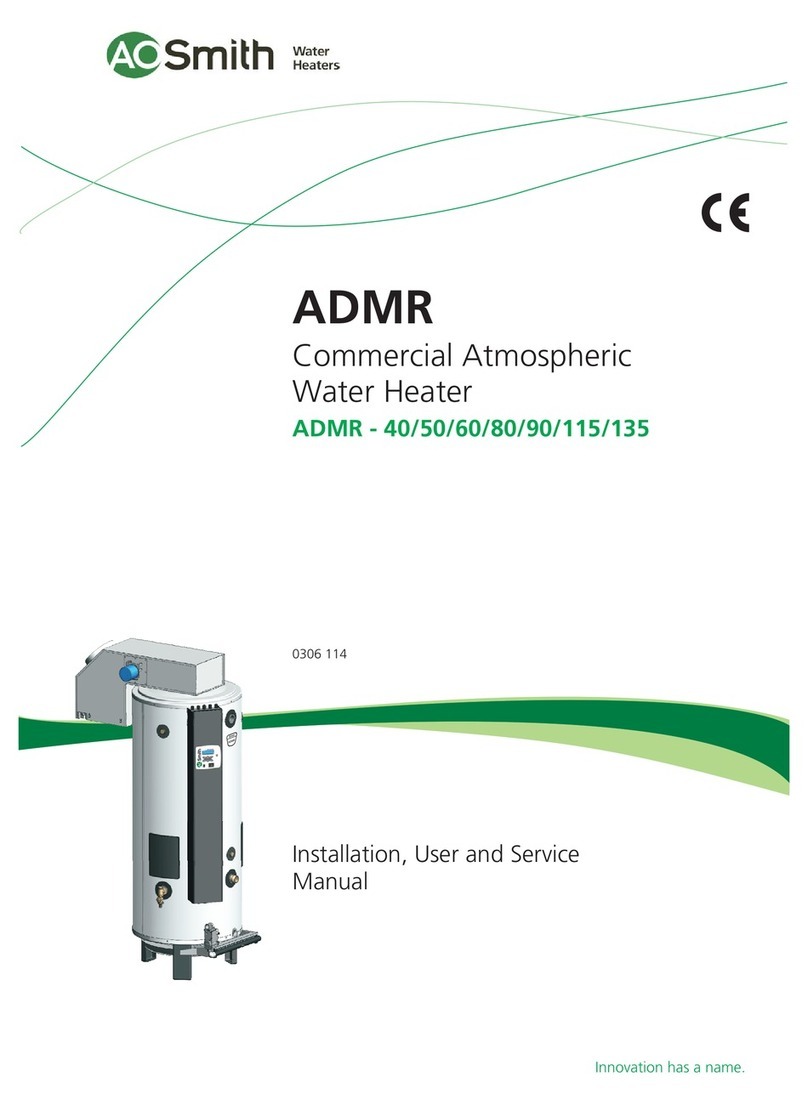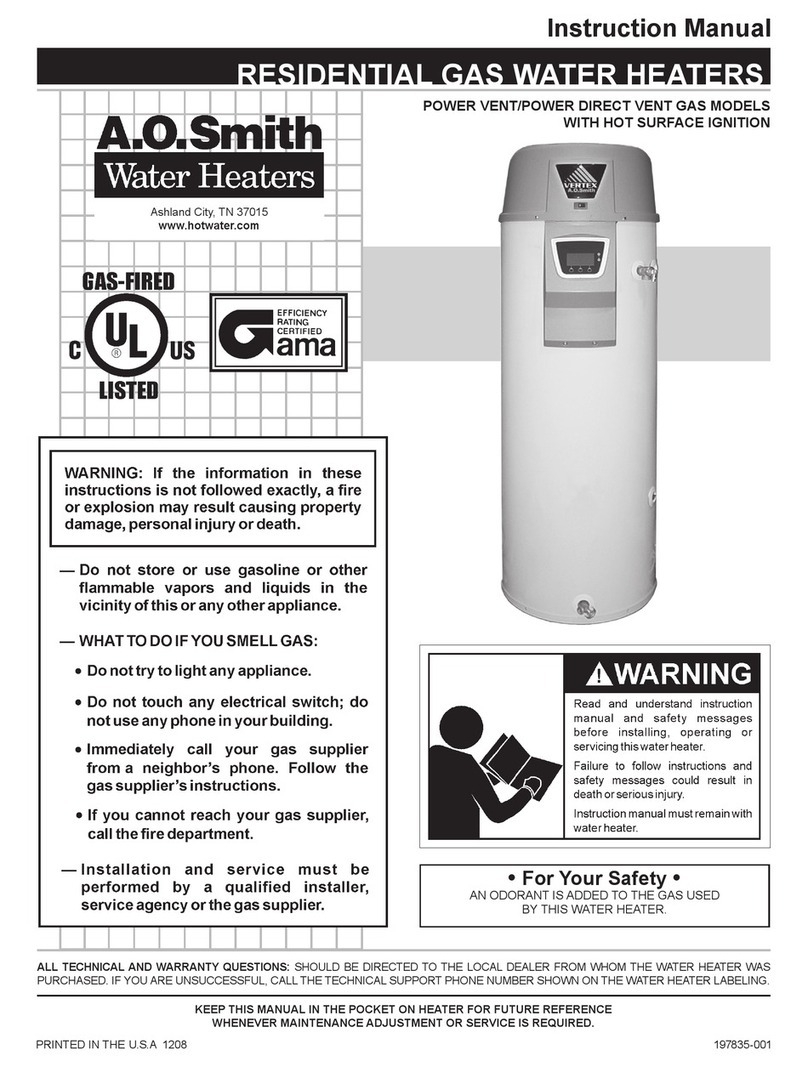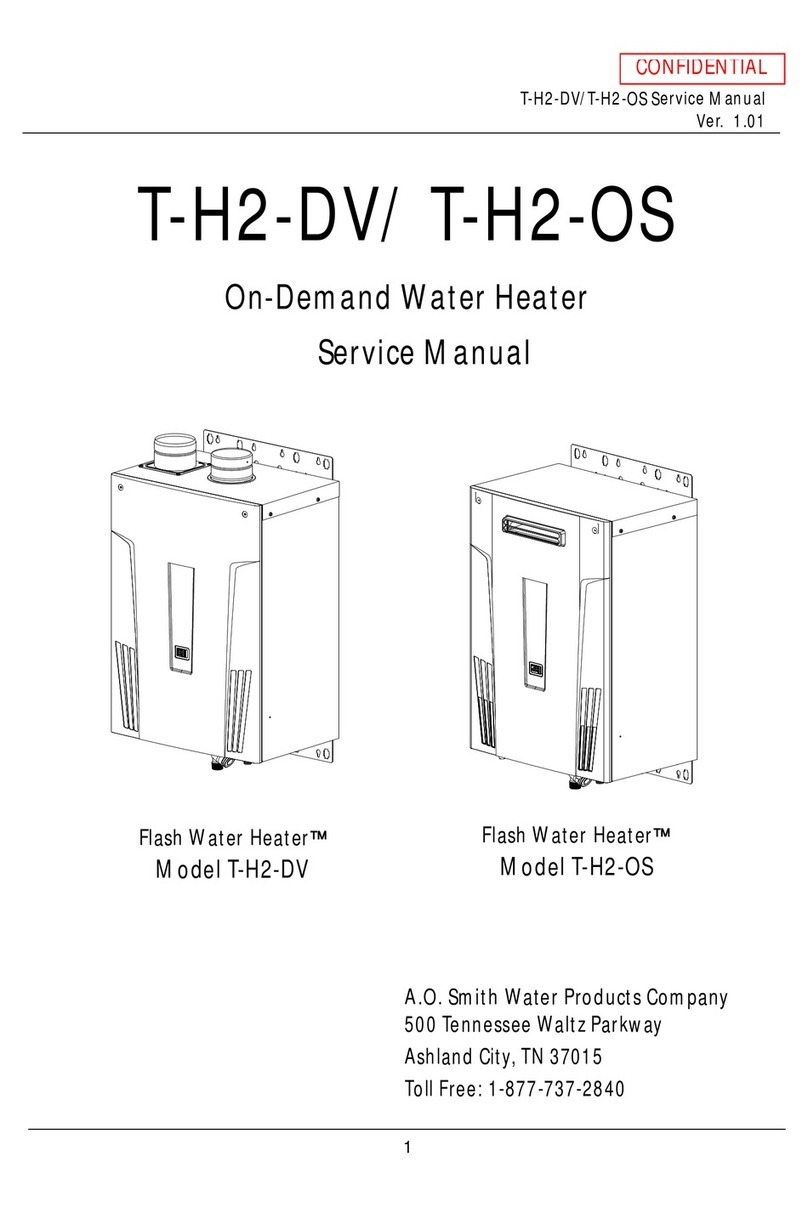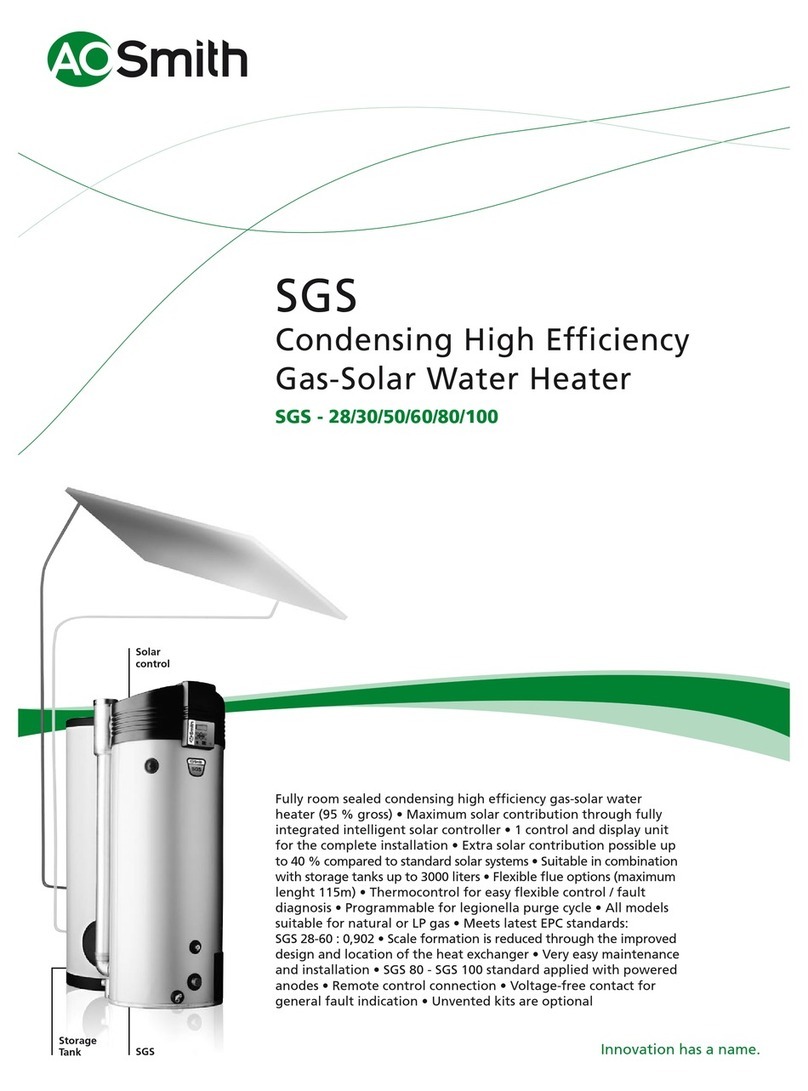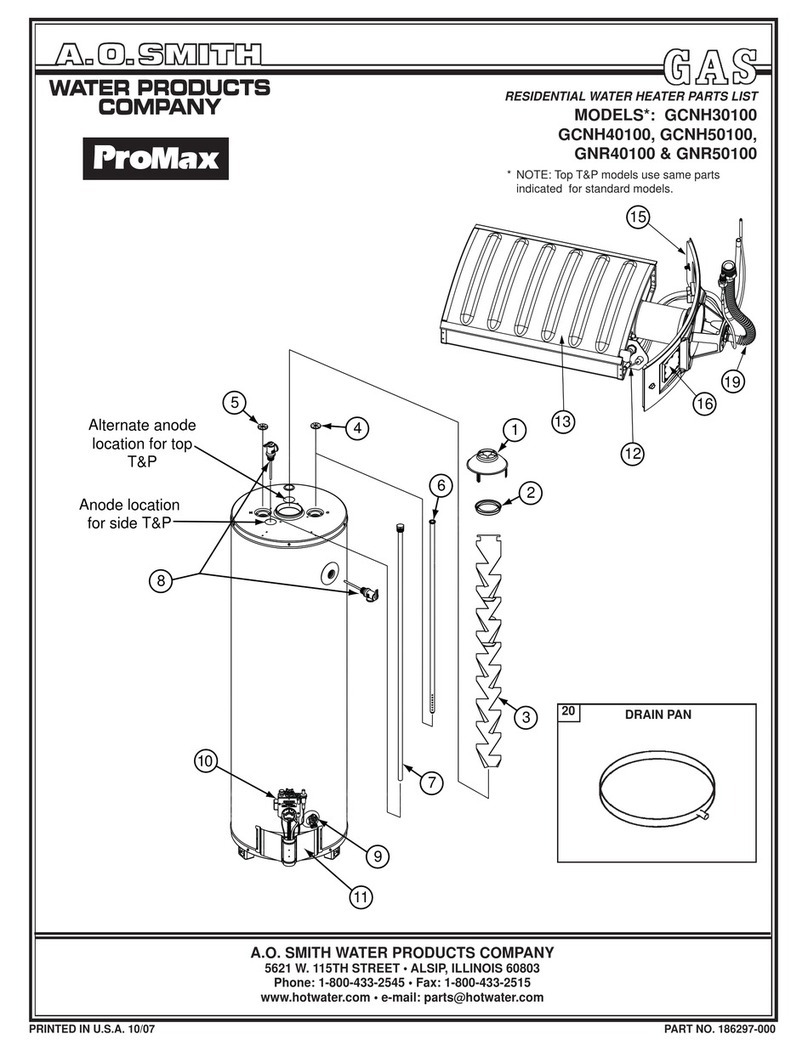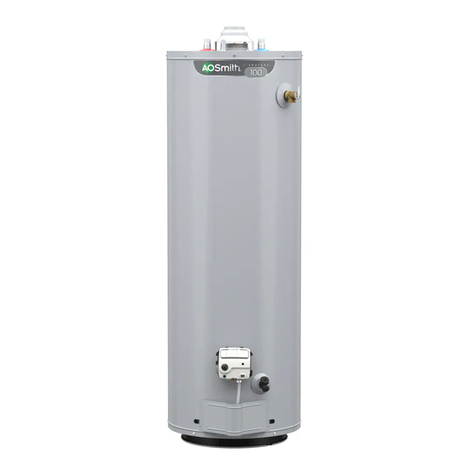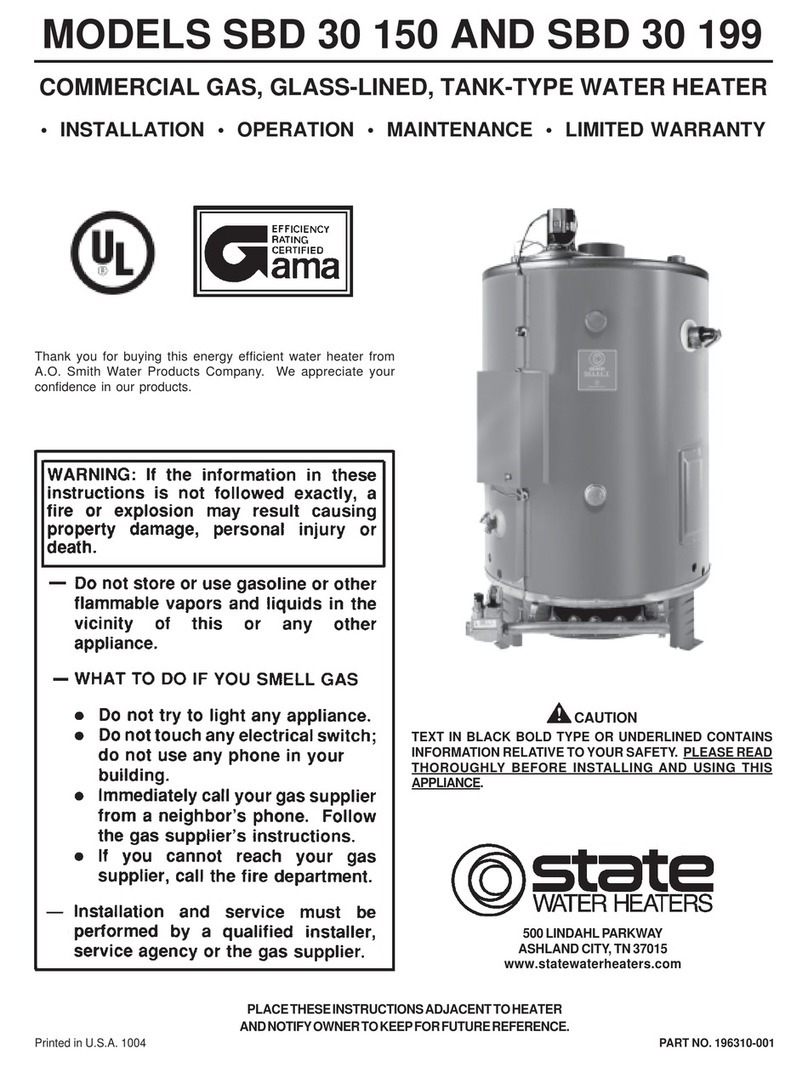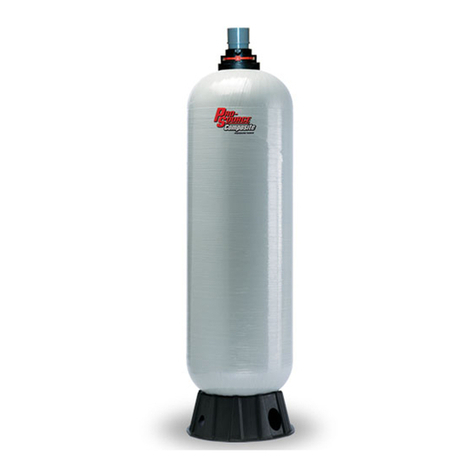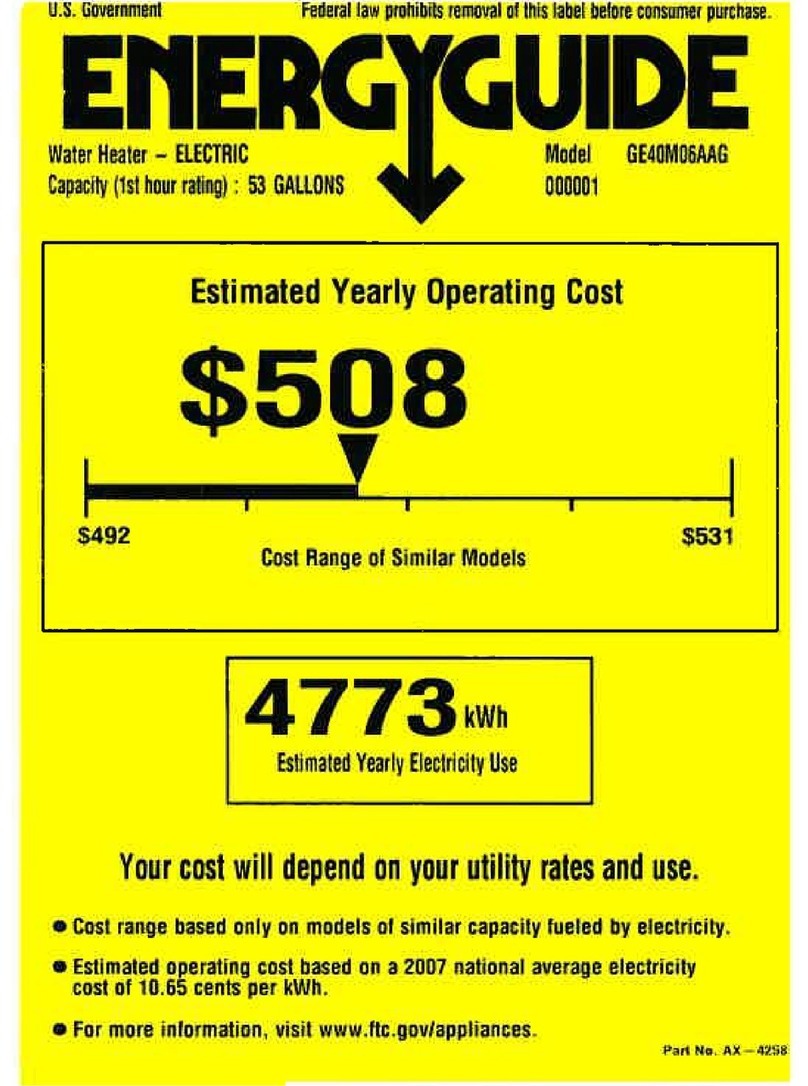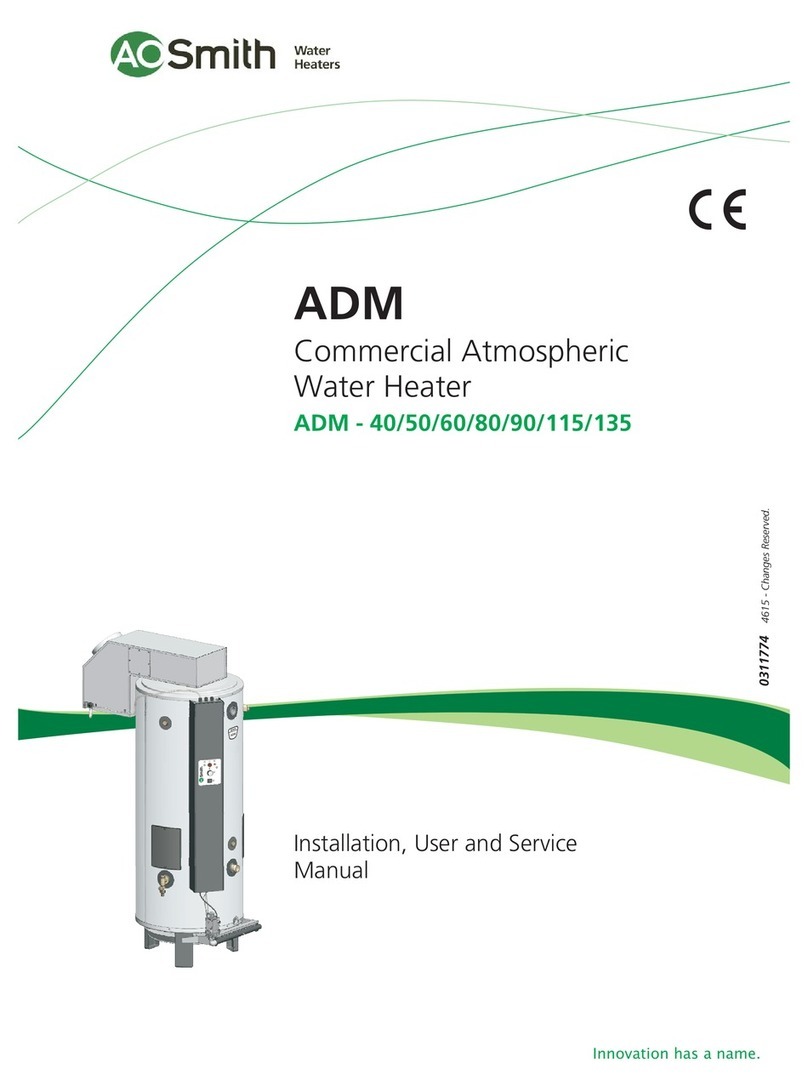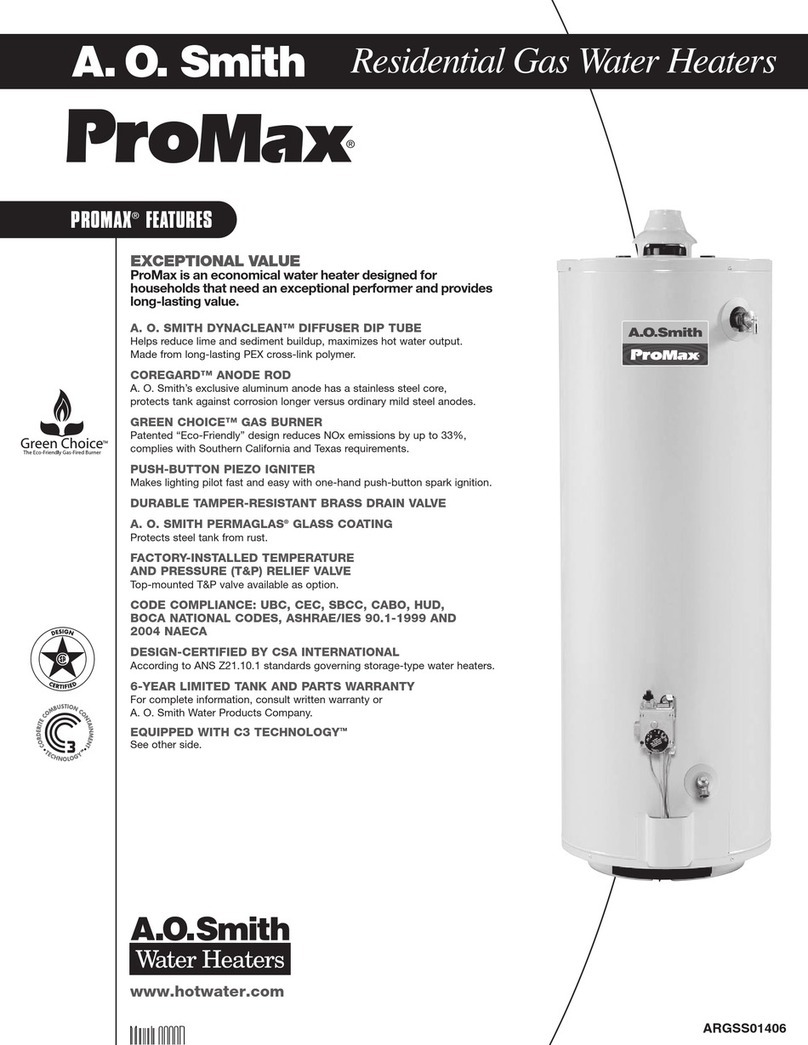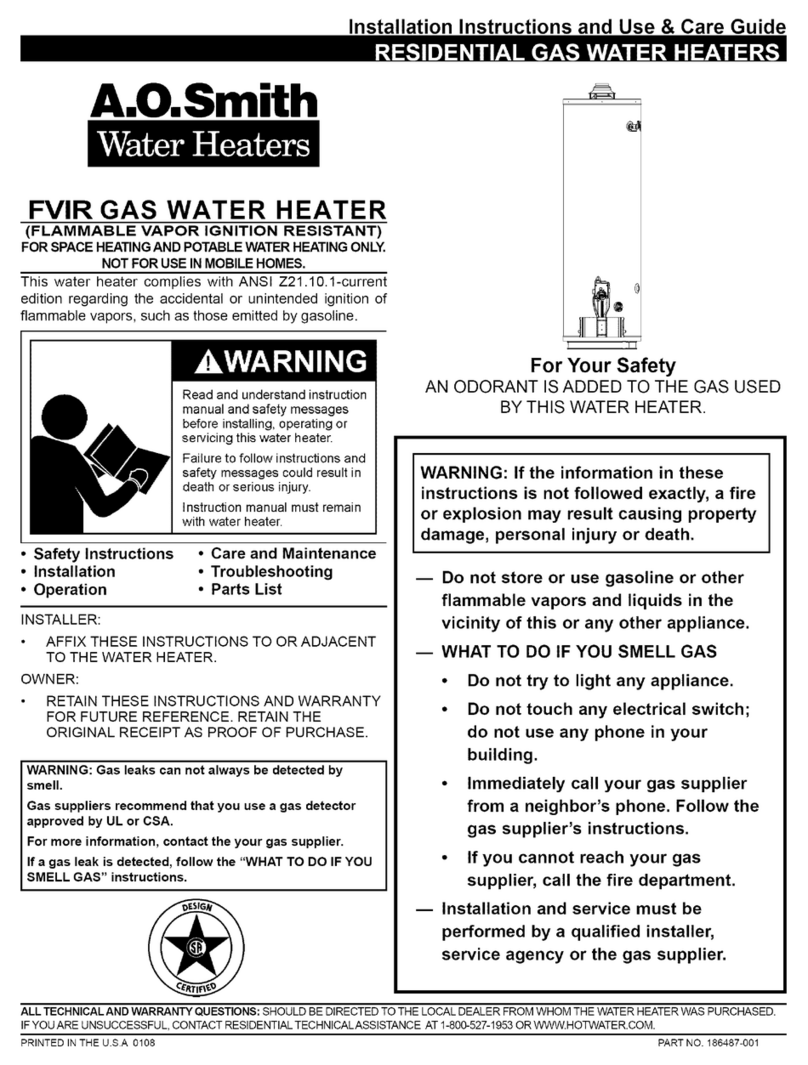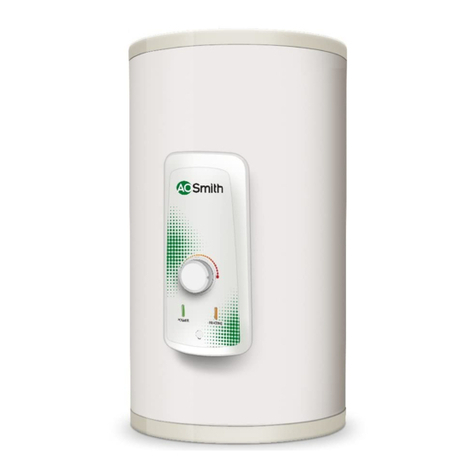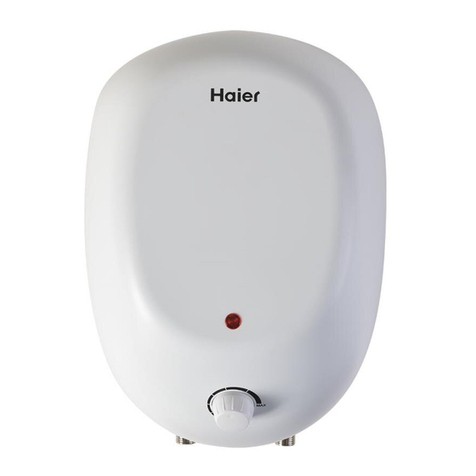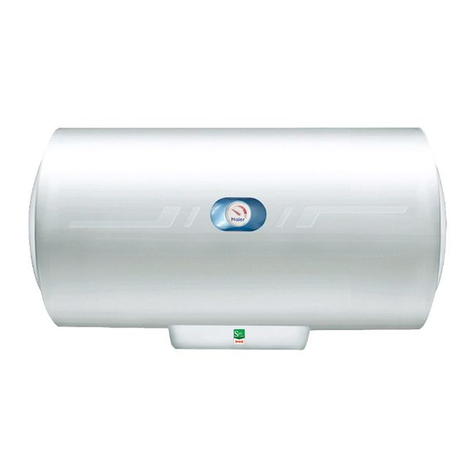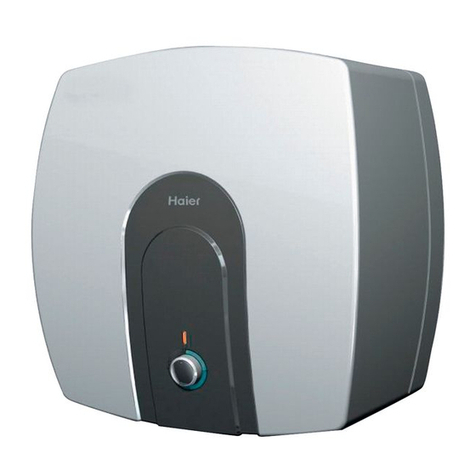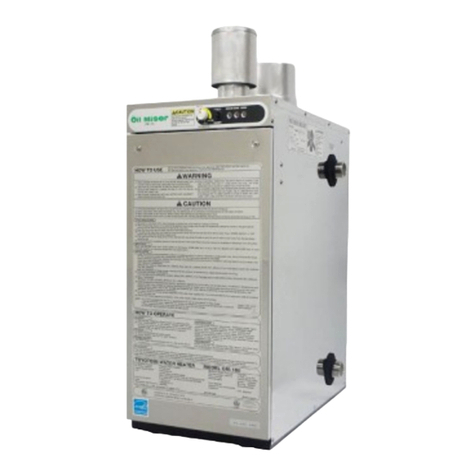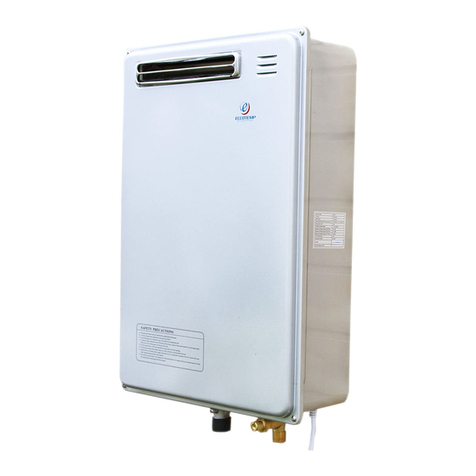
4 • Residenal Hybrid Electric Heat Pump Water Heater Use and Care Guide
IMPORTANT SAFETY INFORMATION
To reduce the risk of property
damage, serious injury or death,
read and follow the precauons below,
all labels on the water heater, and
the safety messages and instrucons
throughout this manual.
RISKS DURING INSTALLATION
AND MAINTENANCE
Electric Shock Risk
Contact with the electrical
parts in the junction box,
behind the access doors
and inside the top shroud can result in
severe injury or death from electrical
shock:
• Disconnect power by opening the
circuit breaker or removing the
fuses before installing or servicing.
• Use a non-contact circuit tester to
confirm that power is off before
working on or near any electrical
parts.
• Replace the junction box cover and
access doors after servicing.
Lifting Risk
The water heater is
heavy. Follow these
precauons to
reduce the risk of property damage,
injuries from liing or impact injuries
from dropping the water heater.
• Use at least two people to lift the
water heater.
• Be sure you both have a good grip
before lifting.
• Unit is top heavy, use an appli-
ance dolly (with strap) to move the
water heater.
RISKS DURING OPERATION
Scalding Risk
This water heater
can make water hot
enough to cause
severe burns instantly, resulting in
severe injury or death.
• Feel water before bathing or show-
ering
• To reduce the risk of scalding,
install Thermostatic Mixing Valves
(temperature limiting valves) at
each point-of-use. These valves
automatically mix hot and cold
water to limit the temperature at
the tap. Mixing valves are available
from your local plumbing supplier.
Follow manufacturer’s instructions
for installation and adjustment of
the valves.
• The User Interface Module (UIM)
on this water heater have been
factory set to approximately
140°F/60°C. Higher temperatures
increase the risk of scalding. Refer
to the National Plumbing Code for
requirements limiting the allow-
able temperatures at fixtures in the
home. Thermostatic Mixing Valves
are particularly important to help
avoid scalding.
Temperature Time to Produce a
Serious Burn
120°F (49°C) More than 5 minutes
125°F (52°C) 1½ to 2 minutes
130°F (54°C) About 30 seconds
135°F (57°C) About 10 seconds
140°F (60°C) Less than 5 seconds
145°F (63°C) Less than 3 seconds
150°F (66°C) About 1½ seconds
155°F (68°C) About 1 second
For informaon about changing the
factory thermostat seng(s), refer to
the “Adjusting the
Temperature” secon in this manual
(“Step 12:”).
Regardless of the water heater
thermostat(s) seng, higher tempera-
tures may occur in certain circum-
stances:
• In some cases, repeated small
draws of water can cause the
hot and cold water in the tank
to “stack” in layers. If this hap-
pens, the water can be as much
as 30F°/15C° hotter than the ther-
mostat setting. This temperature
variation is the result of your usage
pattern and is not a malfunction.
• Water temperature will be hot-
ter if someone adjusted the
thermostat(s) to a higher setting.
• Problems with the thermostat(s),
or other malfunctions may result in
higher than expected water tem-
peratures.
• If the water heater is in a hot envi-
ronment, the water in the tank can
become as hot as the surrounding
air, regardless of the thermostat
setting.
• If the water supplied to the water
heater is pre-heated (for example,
by a solar system) the temperature
in the tank may be higher than the
water heater’s thermostat setting.
To reduce the risk of unusually hot
water reaching the fixtures in the
house, install Thermostac Mixing
Valves.
If anyone in your home is at parcular
risk of scalding (for example, the el-
derly, children, or people with disabili-
es) or if there is a local code or state
law requiring a certain water tempera-
ture at the hot water tap, then these
precauons are parcularly important.
SAFETY
